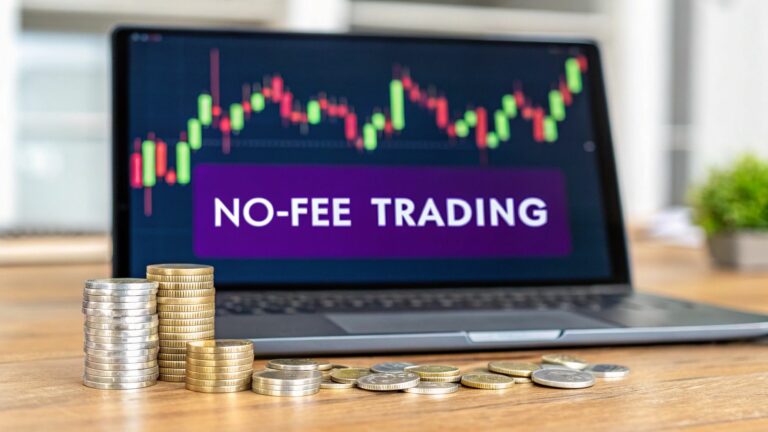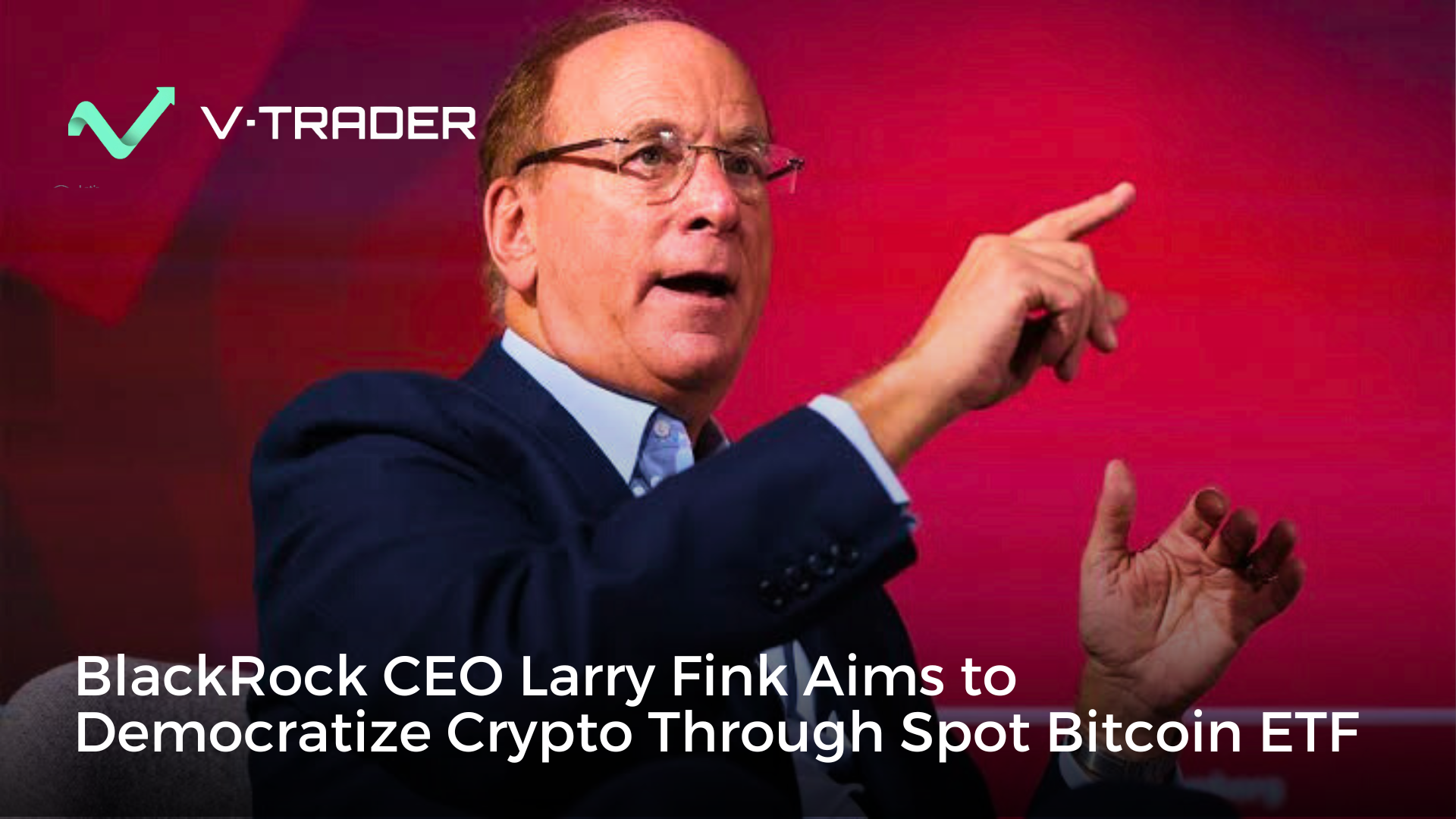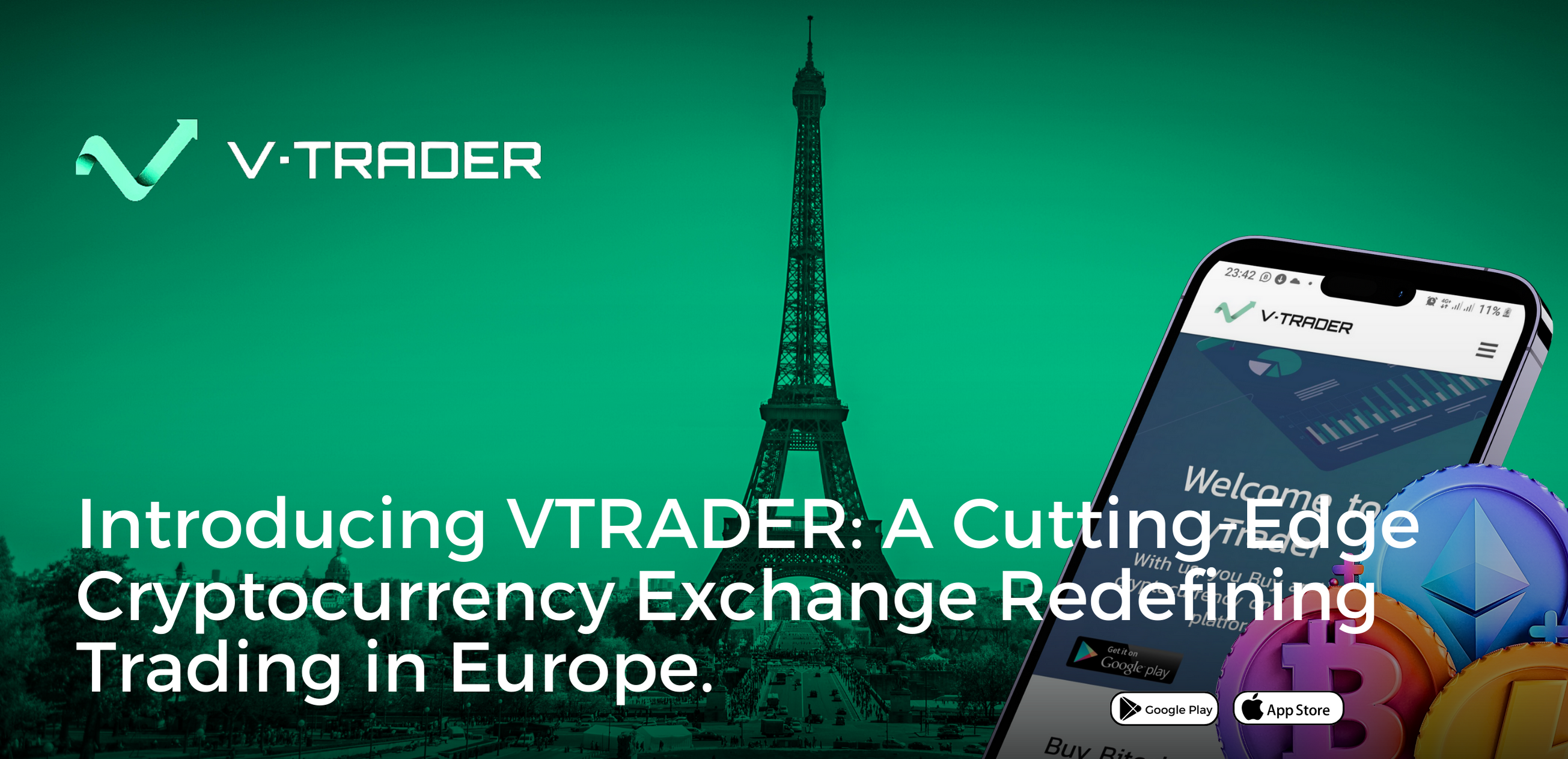When you hear about crypto trading with no fees, it means exactly what it sounds like: a platform that charges zero commission on your buy and sell orders. This isn't just a minor perk; it's a complete shift from the old way of doing things, letting traders keep what they earn instead of giving a slice back to the exchange on every single move.
The Hidden Costs Eroding Your Crypto Profits
Every trader knows the rush of a perfectly timed trade. But what many don't see is the silent killer of gains working behind the scenes: transaction fees. On their own, these tiny percentages—fractions of a percent—look harmless. But trade after trade, day after day, they add up.
Think of your portfolio as a bucket you're trying to fill. Each winning trade adds water, but traditional trading fees are tiny, constant leaks. A 0.2% fee here, a 0.5% fee there… it doesn't seem like much. Over hundreds of trades, though, you've lost a significant amount of capital that could have been working for you. That steady drip is often the difference between hitting your goals and wondering where your money went.
This is a great way to visualize how those "small" fees create leaks in your portfolio, slowly draining your potential over time.
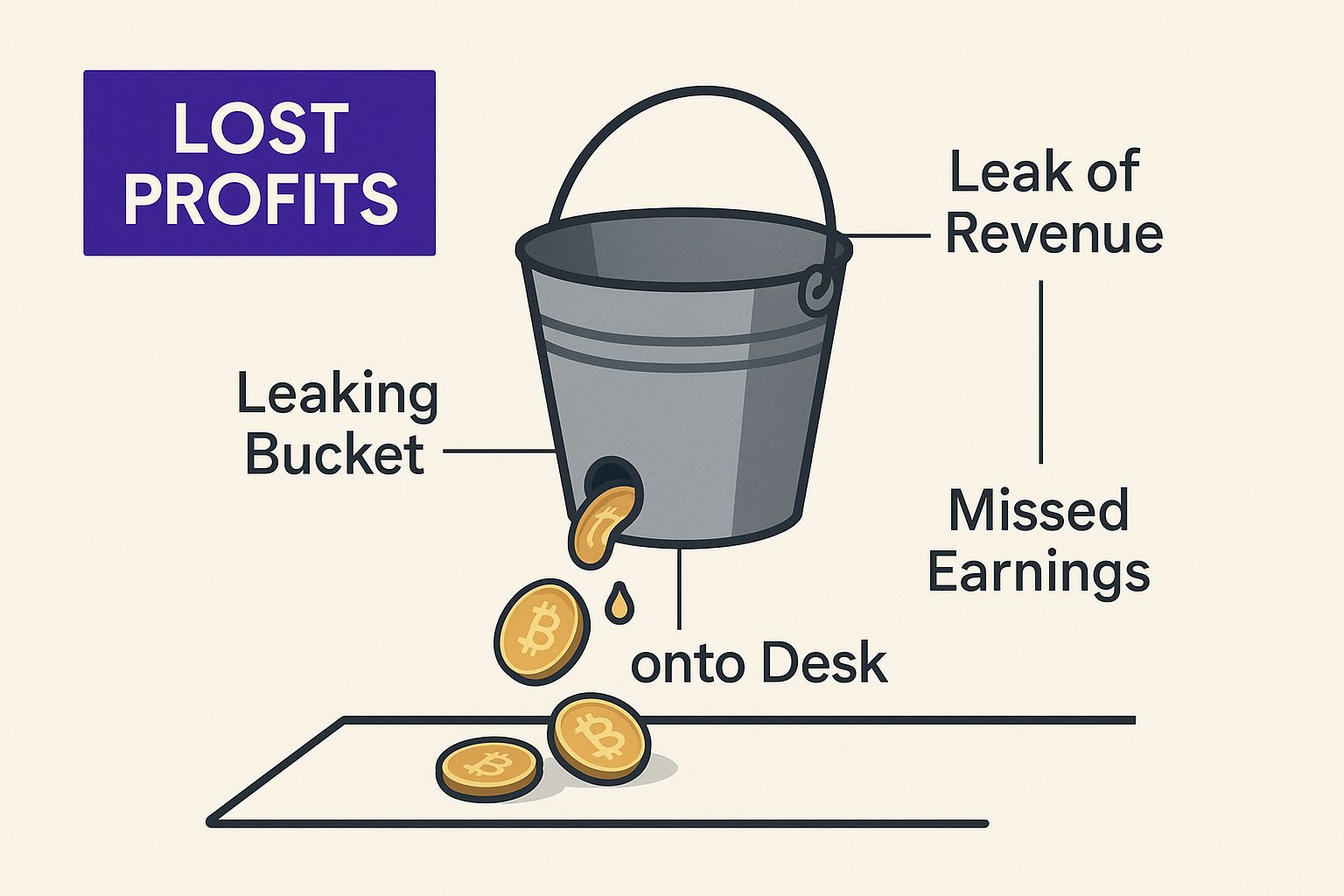
The bottom line is simple: every dollar paid in fees is a dollar that can't grow. It compounds your losses in the long run.
A New Approach to Trading
This is where crypto trading with no fees becomes a game-changer. It’s not about pinching pennies. It's a real strategic advantage that changes how you approach the market. When you plug those leaks, you ensure 100% of your capital is on the field for every play.
This is a huge evolution. For years, crypto exchanges made their money from those transaction fees. The arrival of zero-commission platforms shook things up, forcing the whole industry to compete on user experience and value rather than just fees. This has pushed everyone toward models that are genuinely better for traders.
By eliminating transaction fees, you are not just cutting costs—you are maximizing the compounding potential of your entire portfolio. Every dollar saved from fees is another dollar that can be reinvested to generate future returns.
To really get it, you need to see the two models side-by-side. The old way punished active traders, while the new way encourages smart, frequent moves. If you want to see exactly how this works, you can learn more about vTrader’s transparent fee structure and what it means for your bottom line.
Traditional Trading Fees vs The Zero Fee Model
Let's cut through the noise and look at the real-world impact of both approaches. This table shows you exactly what’s at stake.
| Aspect | Traditional Exchange (Maker/Taker Fees) | Zero-Fee Platform |
|---|---|---|
| Cost Per Trade | A percentage fee (e.g., 0.1% – 0.5%) is charged on every buy and sell order, reducing your position size or profit. | $0. Your trade executes at the market price with no additional commission deducted from your capital. |
| Impact on Strategy | Discourages high-frequency strategies like scalping or day trading, as fees can quickly erase small gains. | Enables a wider range of strategies, making small, frequent trades economically viable and profitable. |
| Profit Realization | A portion of every profitable trade is automatically lost to the exchange, lowering your net return. | You keep 100% of the profits from your trades, allowing for faster portfolio growth and reinvestment. |
| Portfolio Compounding | Slower growth due to capital being consistently siphoned off by fees with each transaction. | Accelerated compounding as your entire capital base remains intact to grow with each successful trade. |
The table makes one thing crystal clear: fees create a drag on your performance. By choosing a platform built around crypto trading with no fees, you remove that drag and give your capital the best possible chance to grow.
How Zero Fee Platforms Actually Make Money
It’s the first question every smart trader asks: if crypto trading with no fees is really a thing, what’s the catch? After all, platforms have to keep the lights on somehow.
The good news is that zero-fee trading isn't a scam or a temporary gimmick. It's a real, sustainable business model built on a few different revenue streams. Think of it like the "freemium" apps on your phone—the main service is free, but they make money in other ways. Understanding how it works is the key to trusting the platform you’re trading on.
The Power of the Bid-Ask Spread
One of the oldest tricks in the book for any marketplace is the bid-ask spread. This isn't a fee you’ll ever see on a receipt. Instead, it’s a tiny difference baked right into the asset's price.
Picture an exchange booth at an airport. They’ll offer to buy a dollar from you for €0.92 (that’s the bid price). But if you want to buy a dollar back from them, they’ll sell it for €0.93 (the ask price). That one-cent difference is their profit.
Crypto exchanges do the exact same thing, just on a massive scale with millions of transactions. The platform’s job is to find the best available price to buy an asset (the bid) and the best price to sell it (the ask). Their income comes from the tiny margin between those two numbers. While it’s often just a fraction of a cent per trade, it adds up to serious revenue when multiplied across the entire platform's trading volume.
Payment for Order Flow (PFOF)
Another major piece of the puzzle is something called Payment for Order Flow (PFOF). It sounds technical, but the idea is actually pretty simple. When you place a trade on a zero-fee platform, that order doesn't always go straight to the open market.
Instead, the platform can route your order to a massive market maker or liquidity provider. These are huge financial firms that need a steady stream of buy and sell orders to execute their own trading strategies, and they're willing to pay for it.
In short, the platform gets a small rebate from the market maker for sending your trade their way. This system lets them offer you commission-free trading while still earning money on the back end.
PFOF isn't just a crypto thing; it’s the engine that powers commission-free trading for many stock and options platforms, too. While it has its critics, regulations require platforms to seek the "best execution" for users, making sure you still get a fair market price.
Premium Services and Value-Added Features
Beyond the mechanics of trading, zero-fee platforms build out their business with a suite of optional, paid services. This is where the freemium model really shines. The core trading is free, but you can choose to pay for more advanced tools and features if you want them.
These premium offerings often include:
- Staking and Lending: You can put your crypto to work by staking it or lending it out through the platform. They’ll take a small cut of the rewards you earn in return for managing the process.
- Advanced Analytics: Serious traders might pay a subscription fee for access to sophisticated charting tools, deep market data, or automated trading bots.
- Fiat On-Ramp and Off-Ramp Fees: While trading from one crypto to another might be free, you’ll likely see small fees when depositing or withdrawing traditional currency like USD or EUR.
- Referral and Affiliate Programs: Platforms invest heavily in growing their user base. You can explore how vTrader’s own affiliate program creates incentives that fuel community growth, which in turn drives all other revenue streams.
Looking into how various partner advertiser strategies are used can also give you a clearer picture of how these business models stay profitable. By mixing these different income sources, platforms can make sure the "free" part of their business remains secure and sustainable for everyone. This is what makes crypto trading with no fees not just a clever idea, but a lasting one.
Choosing the Right Zero Fee Crypto Exchange
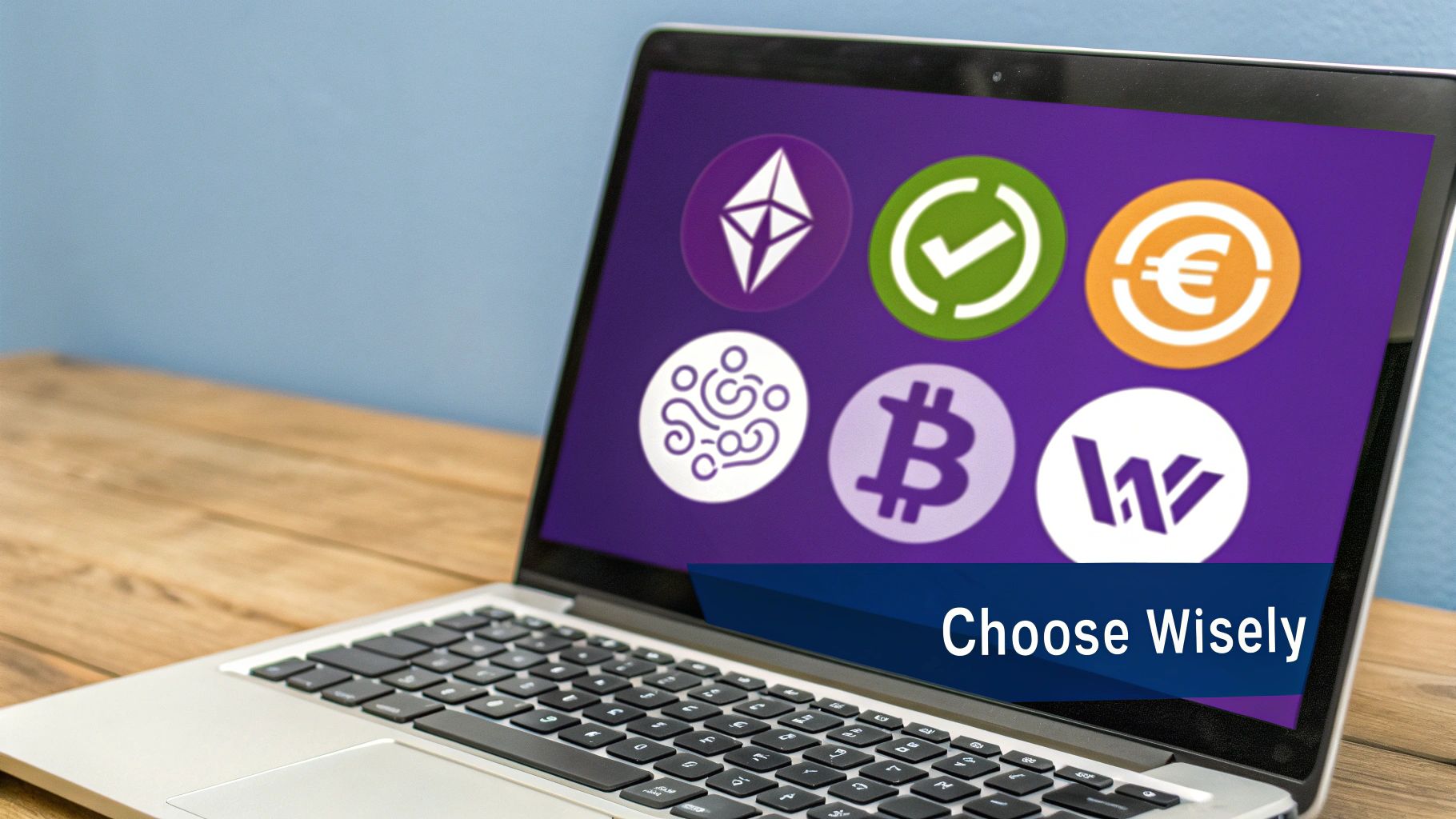
So, you understand how zero-fee platforms work. Great. Now comes the important part: moving from theory to practice and picking the right exchange for you. The world of crypto trading with no fees is getting crowded, and while lots of platforms are flashing "zero-fee" signs, the best one really comes down to your personal trading style and what you need to succeed.
Let's be clear: not all zero-fee exchanges are built the same. Some are great for hunting obscure altcoins, while others double down on iron-clad security or making things super simple for beginners. To make a smart choice, you have to look beyond the headline and dig into the features that will actually shape your trading experience.
Key Factors to Evaluate in an Exchange
Before you park your capital on any platform, you need to do your homework. Think of it like picking a business partner—you wouldn't just go with the first one who offers you a good deal. You need to know they’re reliable, transparent, and have the tools to help you get the job done.
Here’s what you should be looking for:
- Security Protocols: This one’s a dealbreaker. You need an exchange that takes security seriously. Look for essentials like two-factor authentication (2FA), cold storage for the majority of funds (keeping them offline and safe from hackers), and proof of regular security audits. Registration with financial authorities like FinCEN is another huge green flag.
- Asset Selection and Liquidity: Does the exchange actually list the coins you want to trade? And more importantly, does it have good liquidity? Liquidity is just a fancy word for being able to buy or sell an asset quickly without the price tanking. High liquidity means you get fair prices and your orders fill instantly.
- User Interface (UI) and Experience (UX): A clunky, confusing platform is a recipe for disaster. You want an interface that’s clean, intuitive, and doesn’t make you hunt for the “buy” button. The best platforms feel just as good on their mobile app as they do on a desktop, so you can trade from anywhere.
- Customer Support: When something goes wrong—and in crypto, it eventually will—you need to know someone has your back. Check out their support options. Is there 24/7 live chat? A responsive email team? A solid help center? Good support can be a lifesaver when markets are moving fast.
Comparing the Zero Fee Landscape
The race to the bottom on fees has been a massive win for traders like us. In the past few years, exchanges offering zero-fee crypto trading have completely changed the game. Platforms like MEXC, Binance, and Phemex have pushed 0% spot trading fees, which is a huge deal when you consider that older exchanges often charge anywhere from 0.10% to 0.40% per trade. Those small cuts add up fast.
The most important feature of any exchange isn't just its fee structure, but its alignment with your trading goals. A platform with thousands of coins is useless if it lacks the security and liquidity you need to trade with confidence.
Even with zero fees, you still need to stay on top of your game. Using good investment portfolio management tools is crucial for tracking your performance across all your holdings.
To make things easier, I've put together a quick comparison of some of the top players in the low-cost trading space.
Feature Comparison of Leading Low Fee Crypto Platforms
This table offers a quick snapshot to help you see how different platforms stack up at a glance.
| Platform | Fee Structure | Key Features | Best For |
|---|---|---|---|
| vTrader | 0% on all spot trades | Advanced charting tools, high liquidity, FinCEN registered, and integrated learning resources. | Traders of all levels seeking a secure, tool-rich, and genuinely zero-fee environment. |
| Platform B | 0% on select BTC pairs | Large selection of altcoins, staking options, advanced derivatives trading. | Experienced traders focused on Bitcoin pairs and exploring a wide range of digital assets. |
| Platform C | Promotional 0% fees | Simple, beginner-friendly interface, easy fiat-to-crypto purchases. | Newcomers to crypto who prioritize ease of use and straightforward buying processes. |
| Platform D | Low maker/taker fees | High-volume institutional liquidity, robust API for automated trading bots. | Algorithmic traders and institutional clients who require deep market access. |
In the end, this is your call. By focusing on what matters—security, liquidity, user experience, and the right tools—you'll find the perfect home for your crypto trading with no fees. And if you're ever looking to level up your knowledge, diving into resources like the vTrader Academy at https://www.vtrader.io/en-us/academy is a great way to build a solid foundation for smarter trading.
Looking Beyond the Zero Fee Hype
The promise of crypto trading with no fees is a powerful magnet. It pulls in traders who are fed up with watching their profits get shaved down by commissions. But seasoned traders know that the sticker price is rarely the full story. To really protect your capital, you have to look past the "free" marketing and dig into the total cost of using a platform.
It's a lot like booking a flight on a budget airline. The ticket price looks like a steal, but then you get hit with fees for your seat, baggage, and even a bottle of water. Suddenly, that great deal isn't so great. Some zero-fee crypto exchanges operate the same way, with hidden costs that can sting you if you're not careful.
Uncovering the Hidden Costs
True cost-efficiency isn't just about dodging trading commissions. It's about knowing all the other ways a platform might be taking a cut. These costs are often sneaky, making them harder to spot than a straightforward transaction fee.
Here are a few common areas to watch out for:
- Wider Spreads: The exchange might not charge a commission, but they could be widening the bid-ask spread. This means you buy an asset for a little more and sell it for a little less than the actual market price, and the platform quietly pockets the difference.
- High Withdrawal Fees: Moving your money out can be surprisingly expensive. Some platforms slap on hefty, flat-rate fees for crypto or fiat withdrawals, which can be especially painful for smaller accounts.
- Network Fees: Every crypto transaction has a network fee (like gas on Ethereum). Some exchanges pass this exact cost to you, which is fair, but others add their own surcharge on top.
These little charges can pile up fast, turning what you thought was a free trade into an expensive one. Always take the time to read a platform’s fee schedule before you send them any money.
The Importance of Liquidity and Security
Beyond the direct and indirect costs, two other things are absolutely critical for your success and safety: liquidity and security. A platform can claim to be the cheapest on Earth, but it’s worthless if it's unreliable or leaves your assets vulnerable.
Liquidity is all about how easily you can buy or sell an asset without the price moving against you. A platform with low liquidity can struggle to fill your orders, leading to slippage—that frustrating moment when your trade executes at a worse price than you intended. You need active, high-volume markets to get a fair shake.
Security is non-negotiable. A platform’s commitment to protecting your assets through measures like cold storage, two-factor authentication (2FA), and regulatory compliance is far more valuable than any fee savings.
Finally, you can't escape the realities of the blockchain, like network congestion. Understanding these dynamics is a huge part of managing your costs. For instance, using tools like an accurate Ethereum gas tracker lets you monitor network activity in real-time, so you can time your transactions to avoid peak fees and add another layer of control.
Ultimately, choosing a platform for crypto trading with no fees requires a balanced perspective. You need a partner who is transparent about every potential cost while also delivering the deep liquidity and robust security you need to trade with confidence. That complete picture is what builds a truly solid and cost-effective foundation for your strategy.
Unlocking Trading Strategies Without Fees
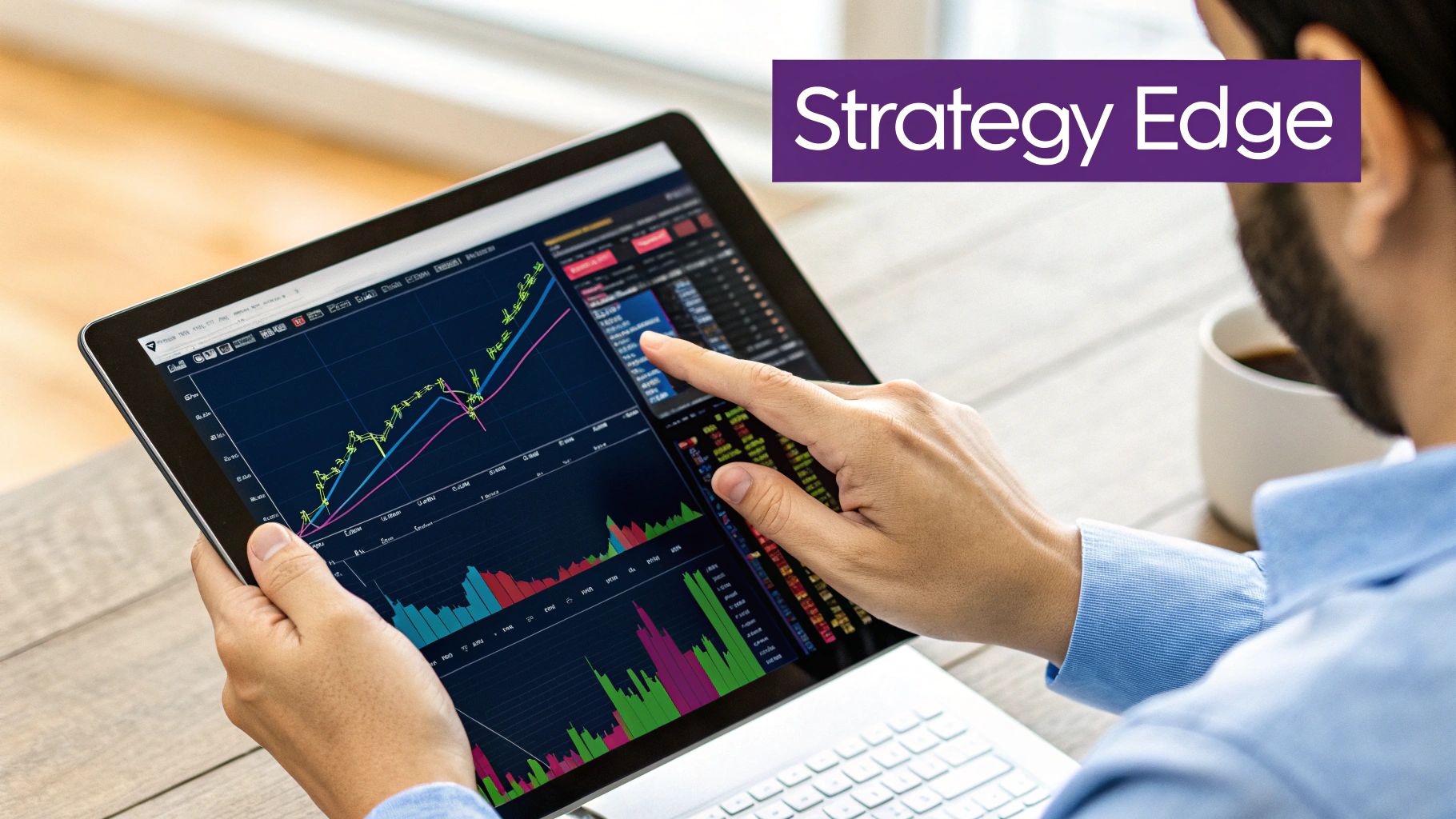
The real power of crypto trading with no fees goes way beyond just saving a bit of cash on each transaction. It completely rewrites the playbook. A zero-fee environment unlocks potent and profitable trading strategies that were simply too expensive to even consider on old-school, commission-based exchanges.
Imagine you're a race car driver. On a platform that charges fees, every time you hit the gas, you burn precious fuel. This makes you second-guess every small adjustment. But in a zero-fee world, you can make as many precise, tactical moves as you need to win, without ever worrying about the fuel gauge. This is how you turn a simple cost-saving feature into a real financial advantage.
High-Frequency Strategies Now on the Table
For a long time, certain trading styles were the exclusive domain of institutional giants with the clout to negotiate rock-bottom fees. As zero-fee platforms have emerged, these advanced methods are finally available to everyone. Eliminating transaction costs has a massive impact, spurring more trading activity and boosting the market's overall health. You can see just how much the market is shifting in these recent crypto exchange statistics.
Two of the most powerful strategies that come to life without fees are scalping and micro-arbitrage.
- Scalping: This strategy is all about making a huge number of trades to profit from tiny, fleeting price movements. A scalper might buy Bitcoin at $60,000 and flip it moments later for $60,005. On an exchange with a 0.2% fee, that small gain gets completely eaten. With zero fees, those tiny wins stack up across hundreds of trades.
- Micro-Arbitrage: This involves exploiting minuscule price differences for the same asset across different trading pairs on one exchange (like BTC/USDT vs. BTC/ETH). These opportunities can vanish in seconds. Getting rid of fees is the only way to make capitalizing on these tiny gaps worthwhile.
A zero-fee model transforms trading from a game of big swings to a game of precision. It empowers traders to capitalize on small, consistent opportunities that were previously uneconomical.
These strategies depend on speed and volume—two things that get hammered by per-trade commissions. By removing that obstacle, zero-fee platforms open up an entirely new world for active traders.
Making Dollar-Cost Averaging More Efficient
Not every game-changing strategy is about lightning-fast trades. Dollar-Cost Averaging (DCA) is a trusted method for building a long-term position. You simply invest a fixed amount of money at regular intervals, no matter what the price is doing. It’s a brilliant way to manage risk and smooth out the bumps of a volatile market.
But on a traditional exchange, DCA has a hidden flaw. If you invest $50 every week, a 0.5% fee might not sound like much, but it means a slice of your capital disappears before it even gets to work. Over a year, those small weekly deductions really add up, creating a serious drag on your portfolio's growth.
A platform that offers crypto trading with no fees makes your DCA strategy far more powerful.
- Maximize Your Investment: With 100% of your money going into each purchase, you accumulate more of your chosen asset over time. It's that simple.
- Encourage Consistency: You can make smaller, more frequent buys—say, daily instead of monthly—without worrying about fees chipping away at your principal.
- Accelerate Compounding: Because every single dollar is working for you from day one, your portfolio can compound faster, leading to much better returns in the long run.
Think about it: investing $100 a month for one year on an exchange with a 0.5% fee means you've handed over $6 in commissions. On a zero-fee platform, that $6 stays in your account, ready to grow. It might not seem like a big deal now, but over five or ten years, the difference could easily be thousands of dollars.
In the end, fee-free trading isn't just about what you save. It's about the freedom it gives you to execute your strategy—whether you're a day trader or a long-term hodler—with absolute efficiency.
Your Questions on No Fee Crypto Trading Answered
When you first hear about fee-free crypto trading, a few questions probably jump to mind. That’s a good thing. Making smart moves with your money means getting clear on the details, so let's tackle the most common questions traders have about crypto trading with no fees.
We’ll cut through the noise and give you straight answers. The goal is to make sure you walk away with a solid understanding of how it all works.
Is Crypto Trading With No Fees Really Free?
This is the big one, and the short answer is: mostly. When you place a buy or sell order on a spot market, you will see zero commission. No “trading fee” will be sliced off the top of your transaction.
But exchanges still need to keep the lights on. So, instead of direct trading fees, their revenue comes from other sources.
- The Bid-Ask Spread: This is the tiny gap between the highest price a buyer offers (the bid) and the lowest price a seller will take (the ask). Platforms earn a small fraction of a cent from this spread on each trade.
- Withdrawal Fees: You might see a small fee when moving crypto to an external wallet or cashing out to your bank account.
- Premium Services: Some platforms offer optional, paid features like sophisticated trading bots, in-depth analytics, or specific staking services.
So, while the trades themselves are free, it’s always smart to glance over a platform’s full fee schedule to see the complete picture.
Are Zero-Fee Crypto Exchanges Safe to Use?
A platform's fee model has nothing to do with its security. An exchange’s safety comes down to its security measures, how it's run, and whether it follows the rules—not the commissions it charges.
Any reputable zero-fee exchange invests heavily in protecting you and your crypto.
The safety of your funds depends on the robustness of the exchange's security infrastructure. Always prioritize platforms that demonstrate a transparent and proactive approach to asset protection, regardless of their fee model.
Here are the non-negotiable security features to look for:
- Two-Factor Authentication (2FA): A must-have for protecting your account from unauthorized access.
- Cold Storage: The best practice of keeping the vast majority of user funds offline, far away from online threats.
- Regulatory Compliance: Being registered with financial authorities, like FinCEN in the U.S., shows a commitment to operating by the book.
- Insurance: Some exchanges offer insurance funds to protect users against major security breaches.
A platform offering crypto trading with no fees can be just as safe—or even safer—than a traditional exchange, as long as it takes these core security measures seriously.
Who Benefits Most From Zero-Fee Trading?
Just about everyone benefits from lower costs, but for some traders, it's a complete game-changer. The savings can seriously boost returns, especially for certain strategies.
High-frequency traders, like day traders and scalpers, are probably the biggest winners. Their entire strategy is built on making dozens, sometimes hundreds, of trades a day to capture tiny price swings. On an exchange with fees, those commissions would wipe out their profits in a hurry.
Long-term investors who use Dollar-Cost Averaging (DCA) also get a huge leg up. Making small, regular buys is a great way to build a position, but fees on every single purchase can be a killer. Zero fees let their capital work more efficiently from day one. Beginners also love it, since they can learn without watching fees eat into their starting funds.
How Do I Get Started With a Zero-Fee Exchange?
Getting started is usually quick and painless. The first step is picking a reputable platform that fits your needs and meets your security standards.
Once you’ve made your choice, it’s typically just four steps to get going:
- Create an Account: Sign up with your email and set a strong, unique password.
- Complete Verification: This is the standard Know Your Customer (KYC) process where you submit an ID. It’s a regulatory requirement that helps keep the platform secure.
- Deposit Funds: You can fund your account by sending crypto from another wallet or depositing money from your bank account.
- Start Trading: As soon as your funds land, you’re ready to hit the spot market and execute trades without paying a dime in commissions.
If you have more specific questions, you can almost always find what you're looking for on a good FAQ page for vTrader.
Ready to stop letting fees erode your profits and start trading with a true competitive edge? Join vTrader today and experience the power of genuinely commission-free crypto trading. With advanced tools, top-tier security, and a platform designed for your success, you can finally trade the way you've always wanted.
Sign up now and claim your $10 bonus!

Steve Gregory is a lawyer in the United States who specializes in licensing for cryptocurrency companies and products. Steve began his career as an attorney in 2015 but made the switch to working in cryptocurrency full time shortly after joining the original team at Gemini Trust Company, an early cryptocurrency exchange based in New York City. Steve then joined CEX.io and was able to launch their regulated US-based cryptocurrency. Steve then went on to become the CEO at currency.com when he ran for four years and was able to lead currency.com to being fully acquired in 2025.
